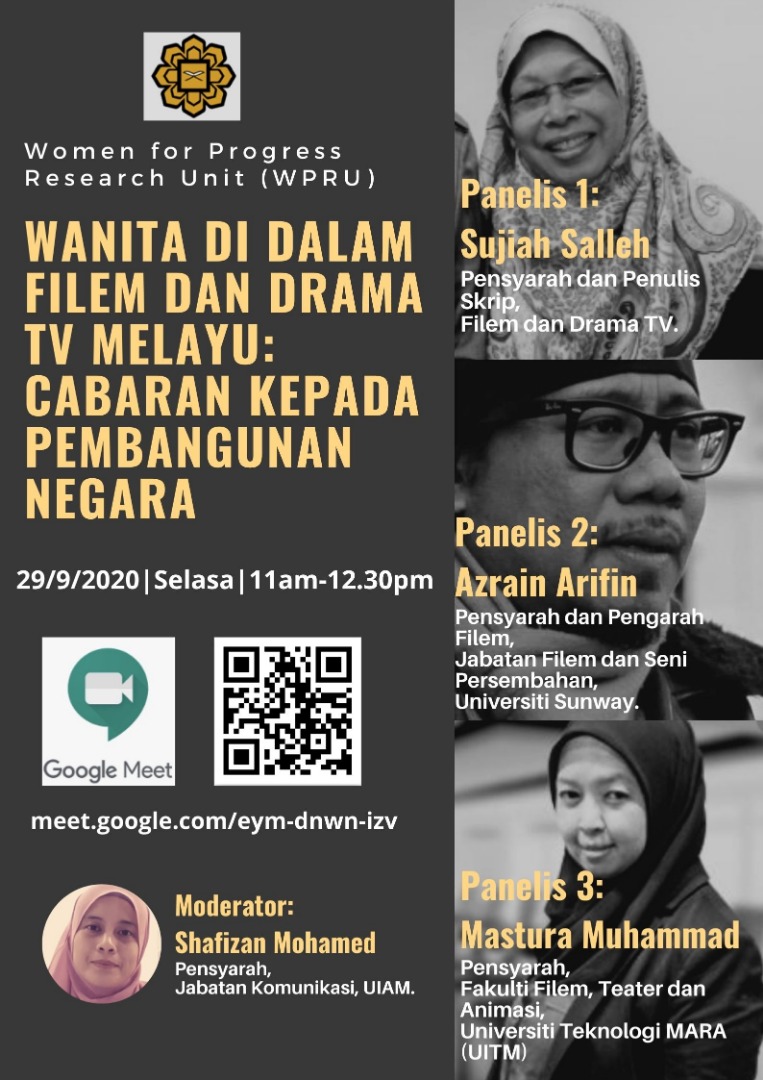By Aqilah Alya
GOMBAK, 1 October 2020: The portrayal of women’s character in Malay drama and film has undergone transformation from one seen as a subservient, innocent kampung girl to a more liberated, independent and responsible woman of modern era, contributing to society and enhancing the role in national development.
This was the stand of three panelists who discussed the portrayal of women’s character in a forum titled “Women in Malay Film and Television Drama: Challenges in National Development” held live online.
“Indeed there has been some progress made in the last seventy years, and we could see this as a transition,” according to the review by the panelists.
The panelists were drawn from experts in film industry who mostly worked behind the scene in drama and film making, who are also university lecturers.
They were Sujiah Salleh, an experienced script writer and formerly a lecturer (at USM and IIUM), Azrain Ariffin, an independent film maker and a lecturer of Film and Arts Department at Sunway University, and Mastura Muhammad, a lecturer of Faculty of Theatre and Animation, Universiti Teknologi Mara.
The womens character in Malay drama and film have undergone several changes over time, and were faced with challenges due to the progress of the respective era. And as we moved with the time, film producers and directors were equally sensitive for women’s character to reflect such reality in their film and drama.
According to Sujiah, women who were once portrayed in films and dramas as ‘decoration’ are now shown to play an important role such as in the media.
œWe can see that in the 1950s or 1960s, women were pictured as village or kampung women. In the 1970s, women had become a seizure object for men, and now the revolution of the women can be seen based on women who live in this era which they no longer have a shy character, but rather a bold one, not the same as the older generation, Sujiah pointed out.
The panelists agreed that the changes in womens character were also influenced by international movie and drama. œWe can see that in the early 2000s, most Malay films and dramas have become more Islamic than before such as in “Ayat-Ayat Cinta” and “Nur Kasih”.
“The producers had become more daring to produce such film and drama, said Mastura Muhammad. “This led us having a character that depicts a Muslimah in film and drama.”
Azrain Arifin has a different opinion which he thought that the identity of character of Malay women is constrained because the industry is only bound to one type of story.
œAccording to our history, Malay women have been playing a much bigger role, and not only constrained to one stereo type of story, he said.
The forum, held on Tuesday (29 September) on Google Meet from 11.00 am until 12.30 pm, was organised by “Women for Progress Research Unit” (WPRU), IIUM and was moderated by Dr. Shafizan Mohamed from IIUM’s Communication Department.
It was well attended by film and drama enthusiasts, film producers and drama critics, as well as students and lecturers from various universities.***
